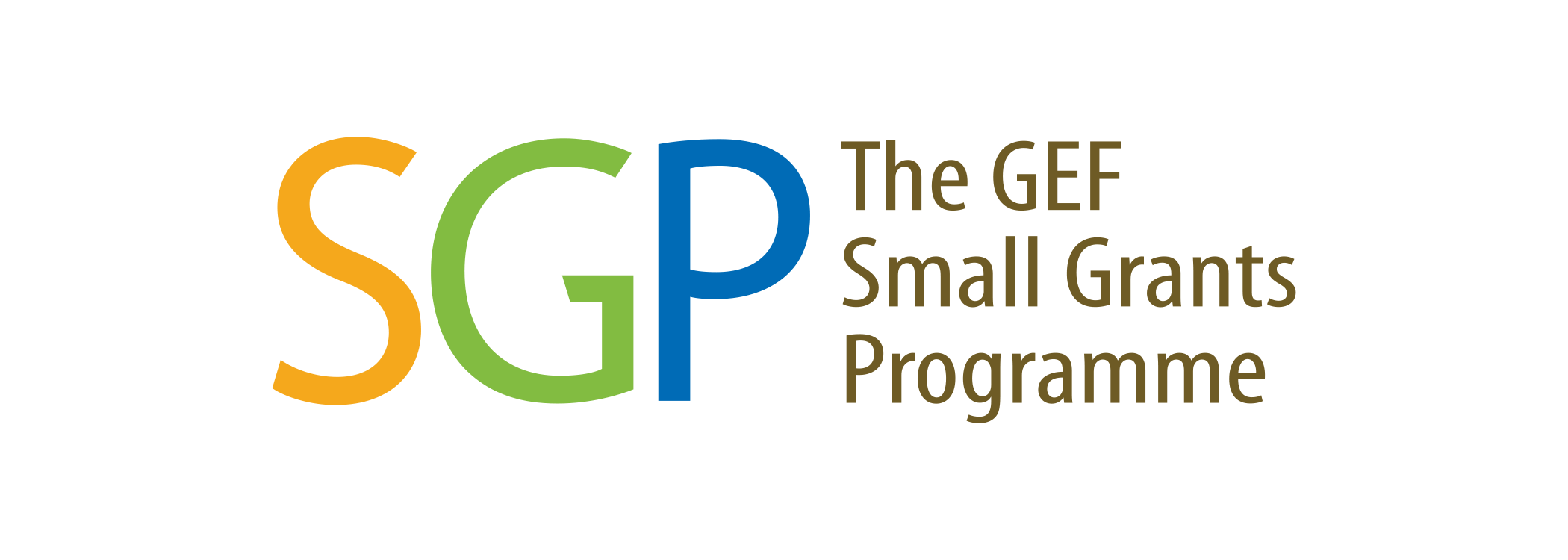An ancestral answer to climate change
Forest restoration with native plant in the Democratic Republic of the Congo
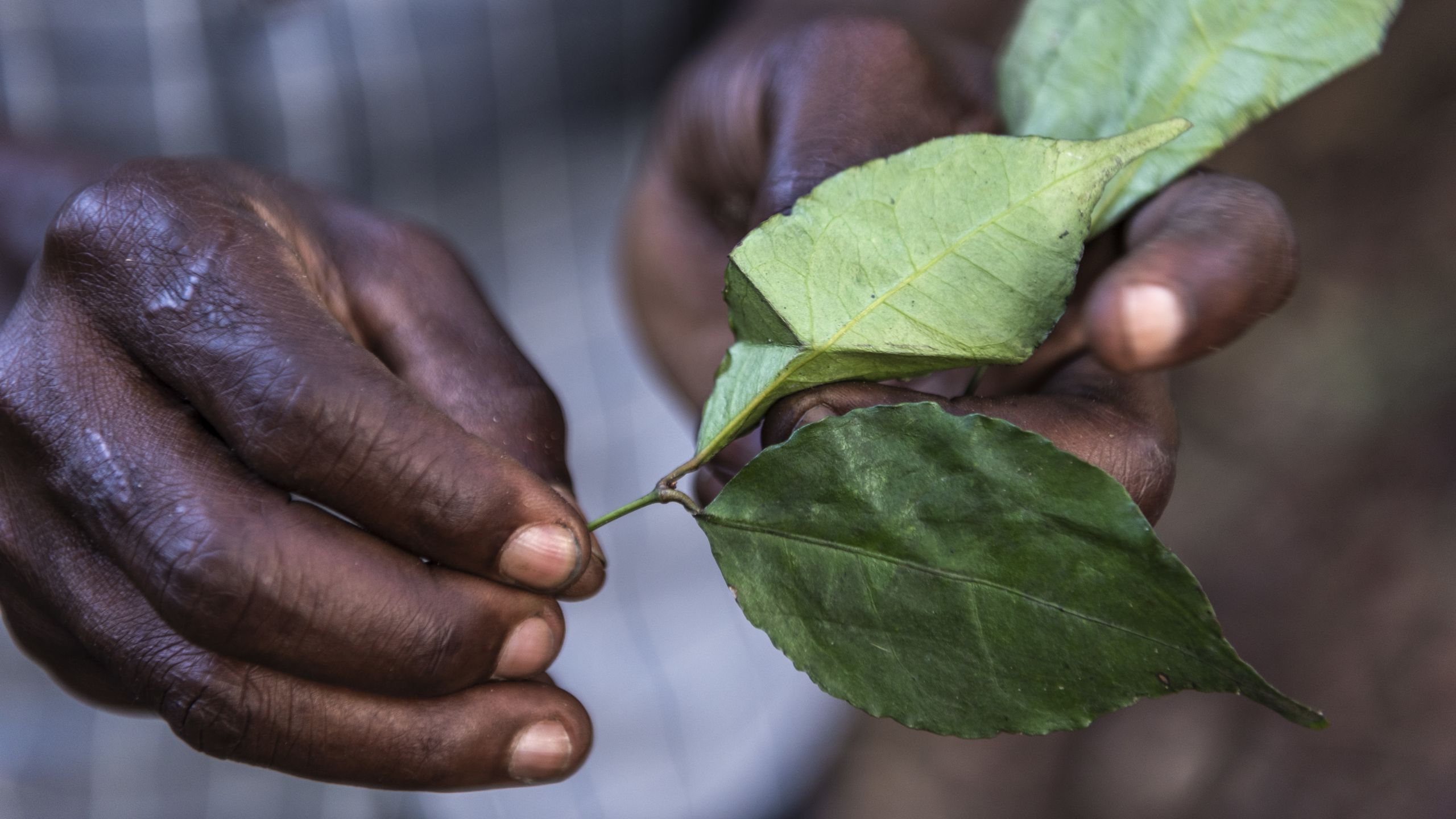
Fumbwa (Gnetum africanum) is a wild vine with thick papery leaves found in the tropical forests of Africa.
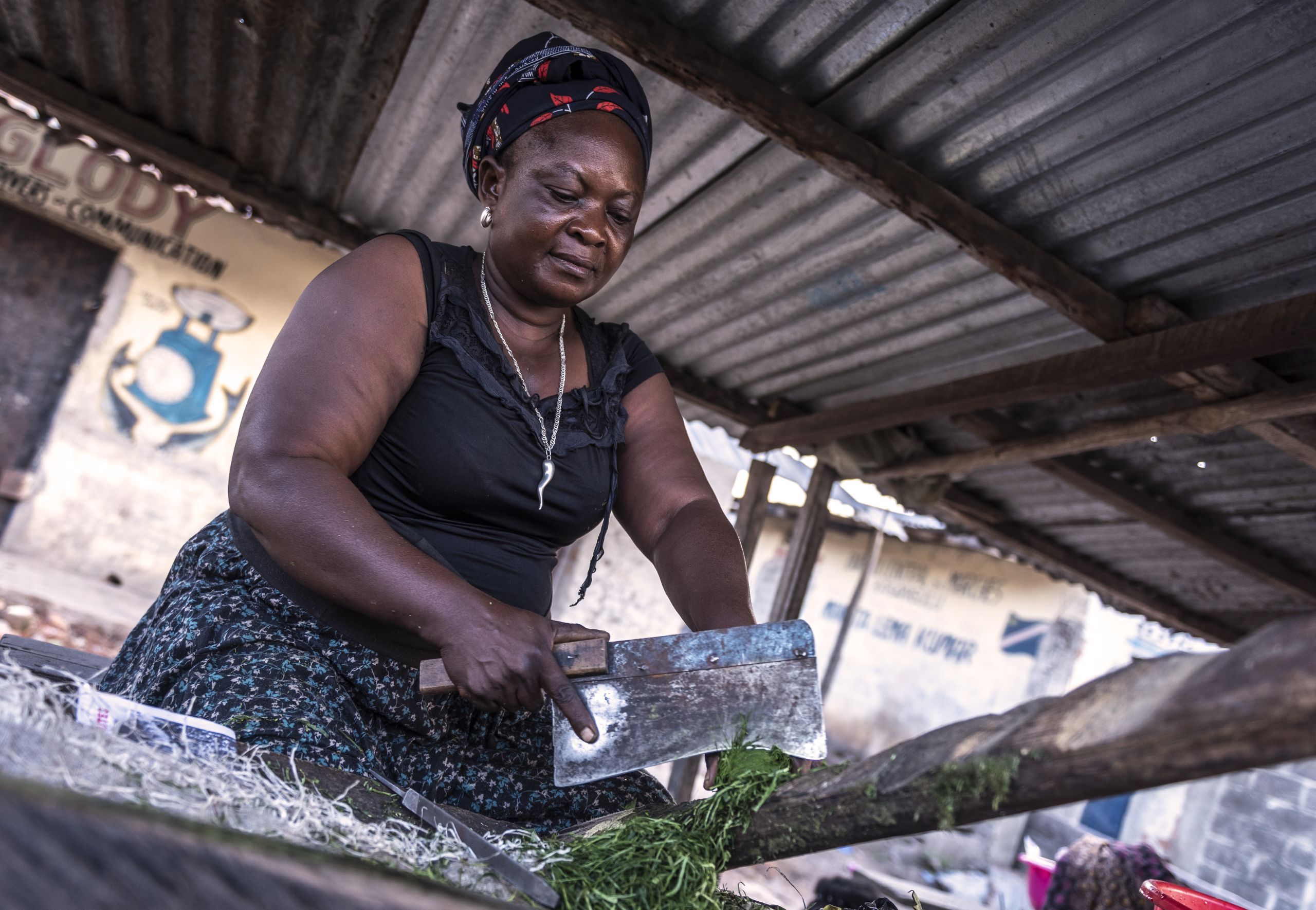
“It is one of the staple foods in Kongo Central, but it is also one of the forest products that are in danger of disappearing”, explains Bueno Ngenga Thomas, co-ordinator of the Rural Initiative for Integrated Development (RIID), which works with local communities in this province of the Democratic Republic of the Congo (DRC) to preserve the forests that are key to combatting climate change.
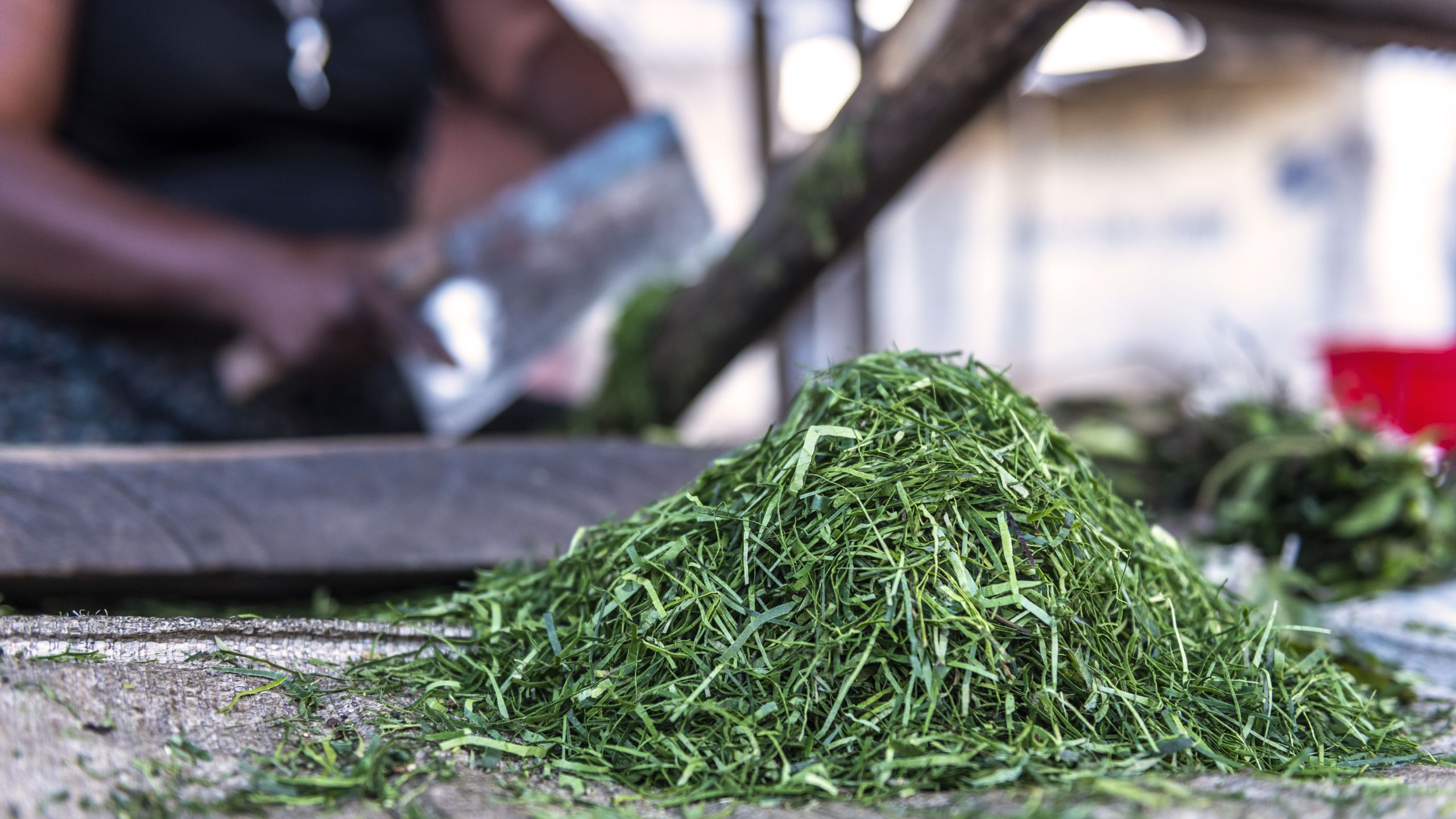
Preparing fumbwa at market. Photo: © UNDP DRC CO, SGP DRC.
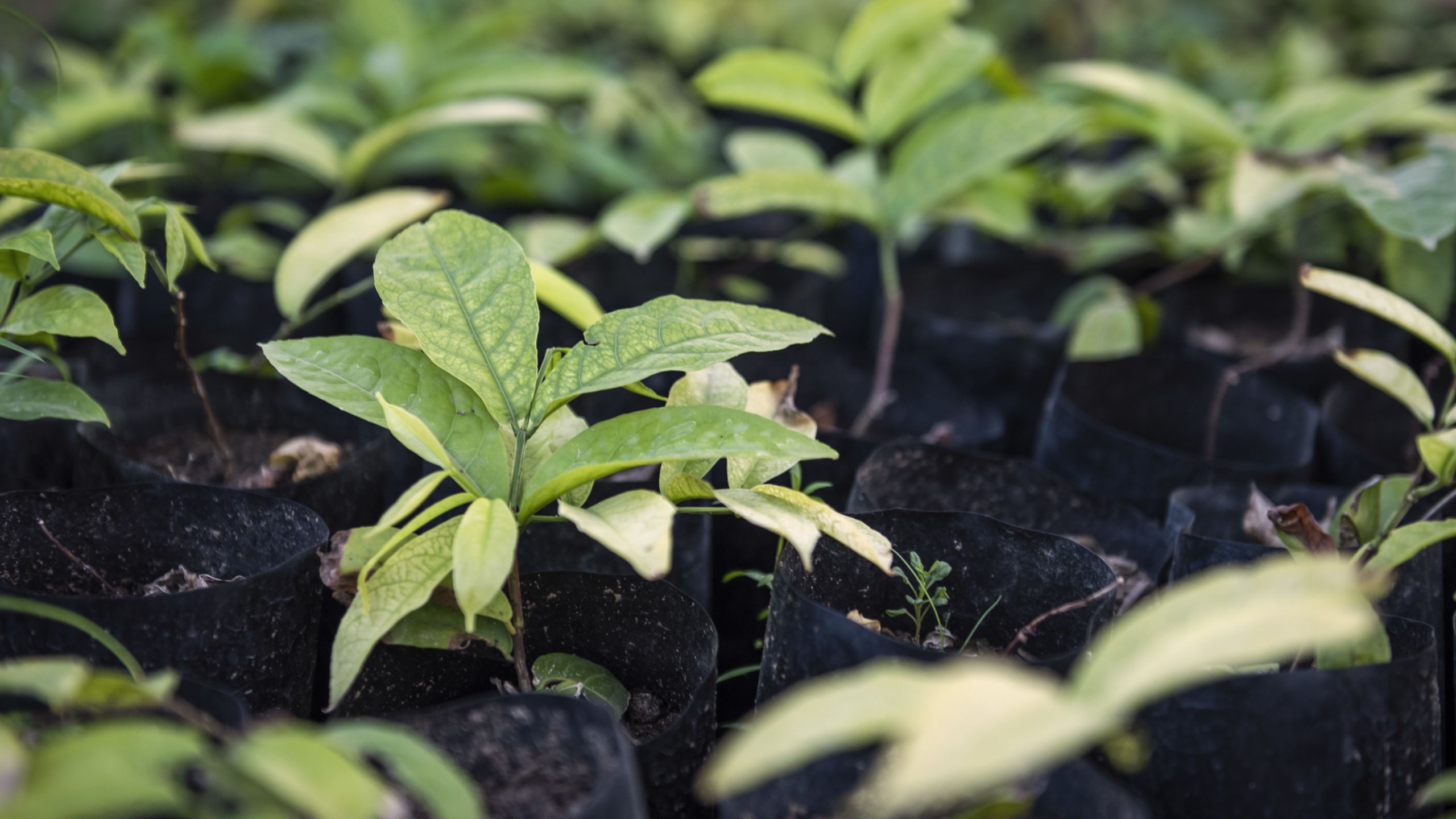
Fumbwa seedlings. Photo: © UNDP DRC CO, SGP DRC.
Fumbwa seedlings. Photo: © UNDP DRC CO, SGP DRC.

Preparing fumbwa at market. Photo: © UNDP DRC CO, SGP DRC.
Preparing fumbwa at market. Photo: © UNDP DRC CO, SGP DRC.

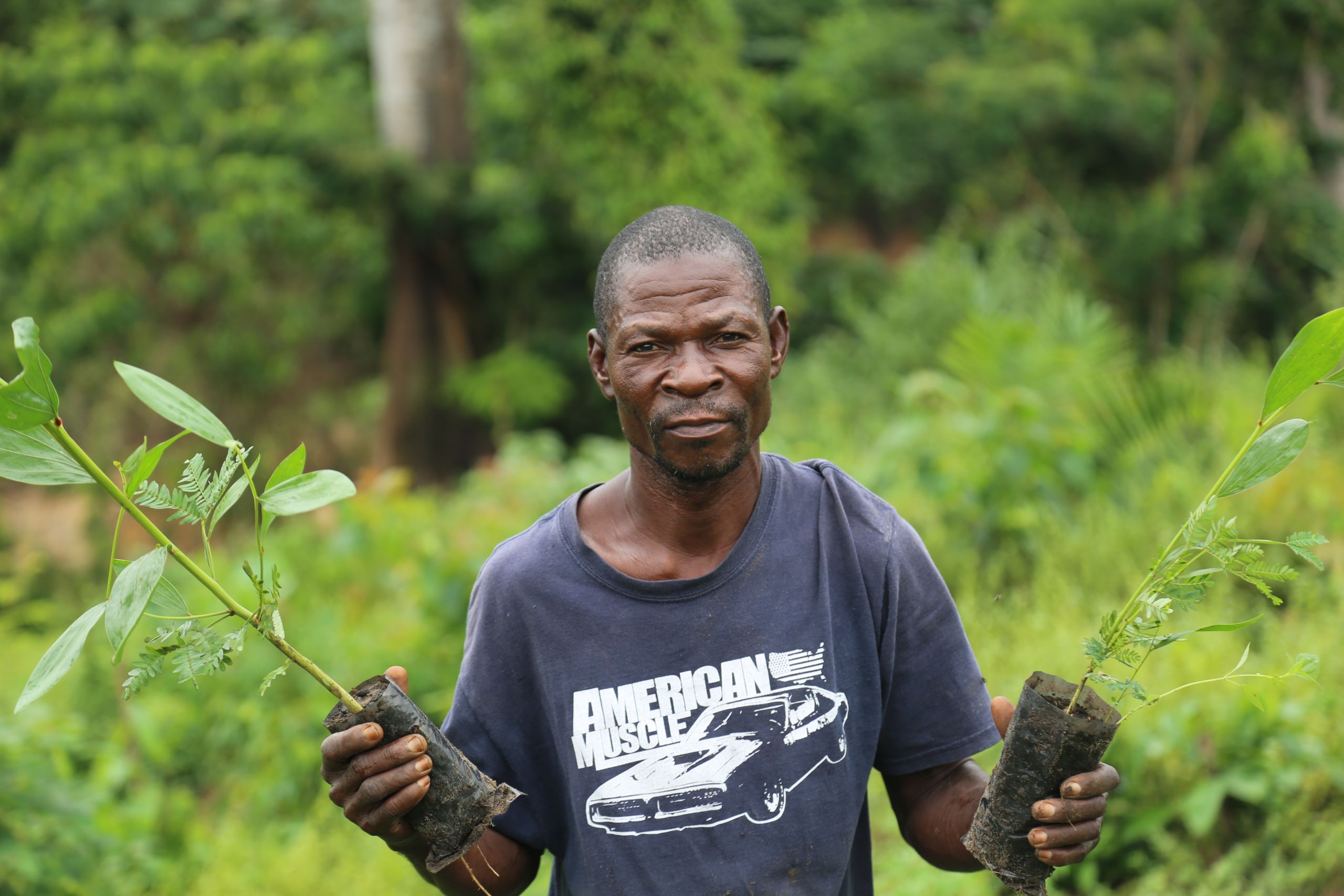

The project is working to produce at least 150,000 seedlings. These seeds will then be transplanted into conservation forests by the local communities. Photo: © UNDP DRC CO, SGP DRC.
The project is working to produce at least 150,000 seedlings. These seeds will then be transplanted into conservation forests by the local communities. Photo: © UNDP DRC CO, SGP DRC.
Kasangulu, one of the district’s 10 territories, lies in the northern part of Kongo Central; the extraction of charcoal and firewood are the region’s primary economic activities.
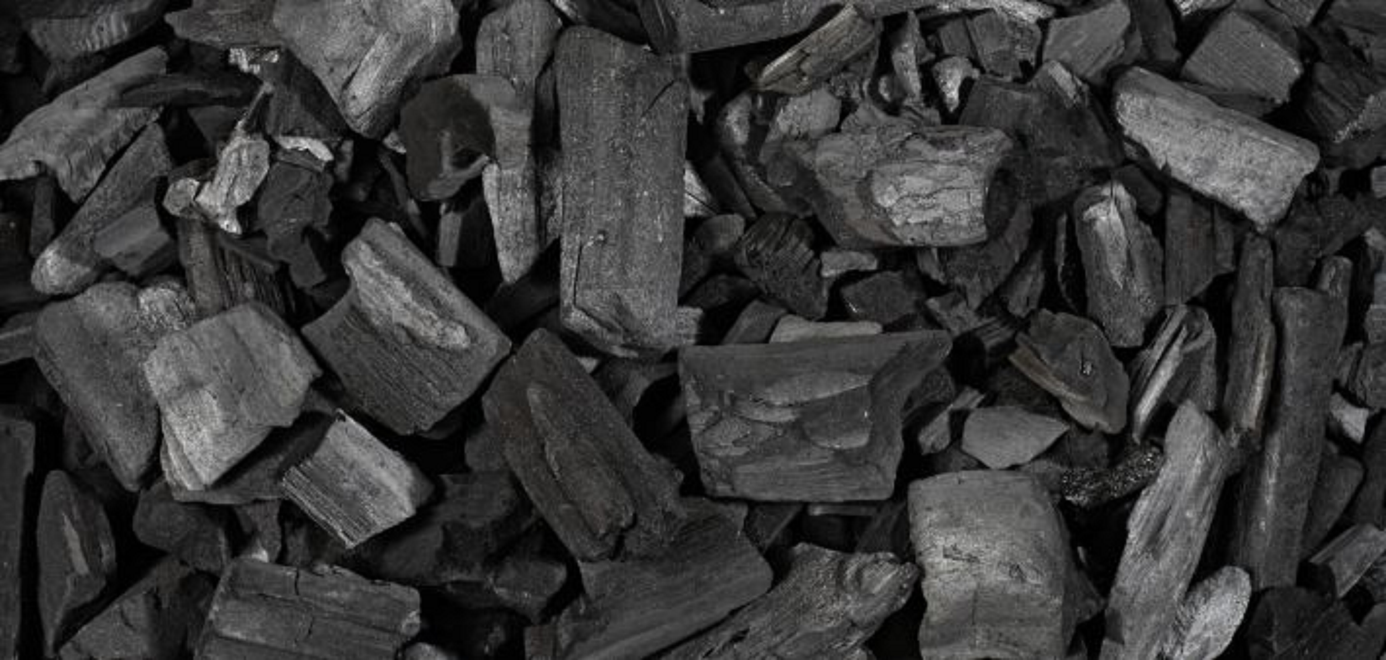
Charcoal ready to use. Photo: © UNDP DRC CO, SGP DRC.
Because only 11% of the DRC is serviced by the country’s electrical grid, these fuels are the country’s primary source of energy, and offer higher profits than agriculture for the territory’s rural population.
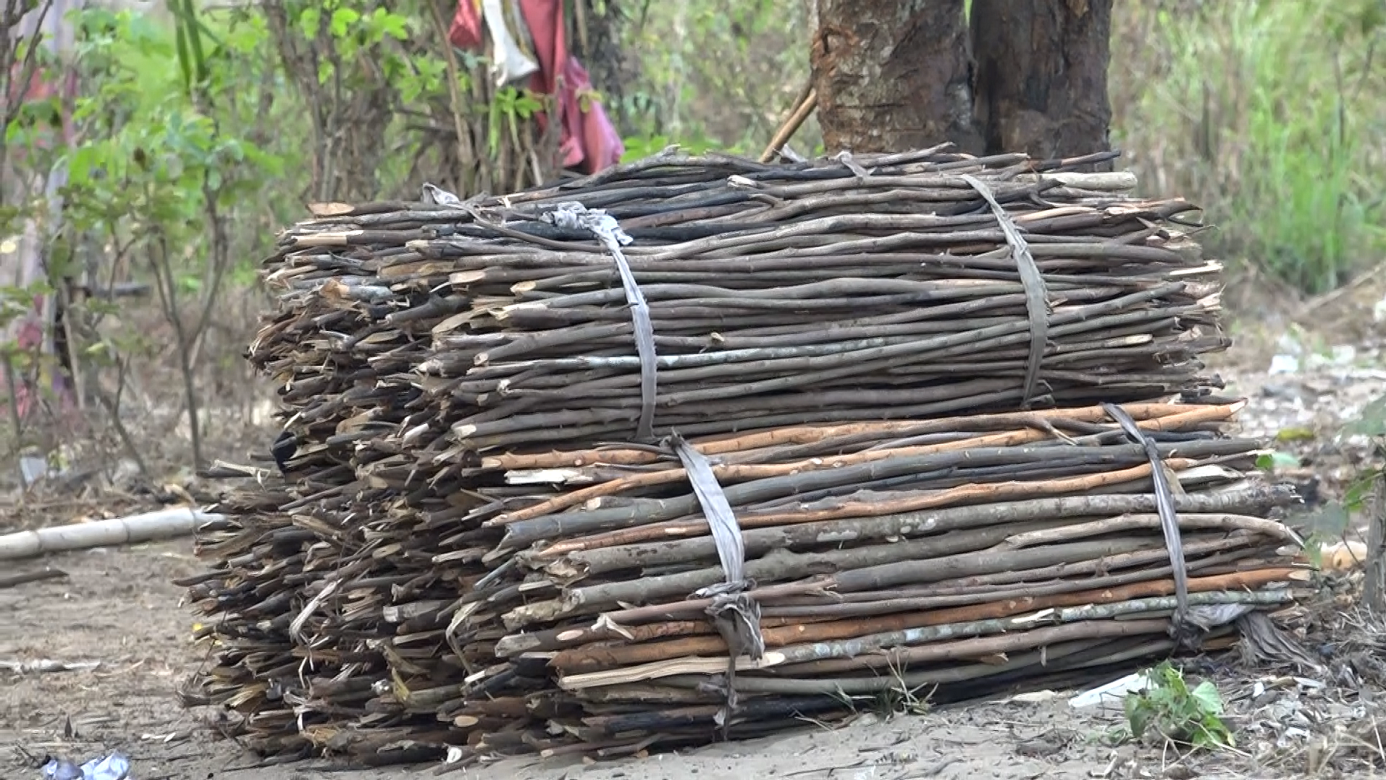
Firewood bundles. Photo: © UNDP DRC CO, SGP DRC.
The national capital Kinshasa - less than one hour away by road – represents a profitable market for Kasangulu’s fuels. But this trade comes at a steep price: as people harness trees for economic gain, the region’s rich tropical forests are quickly disappearing with devastating environmental consequences.
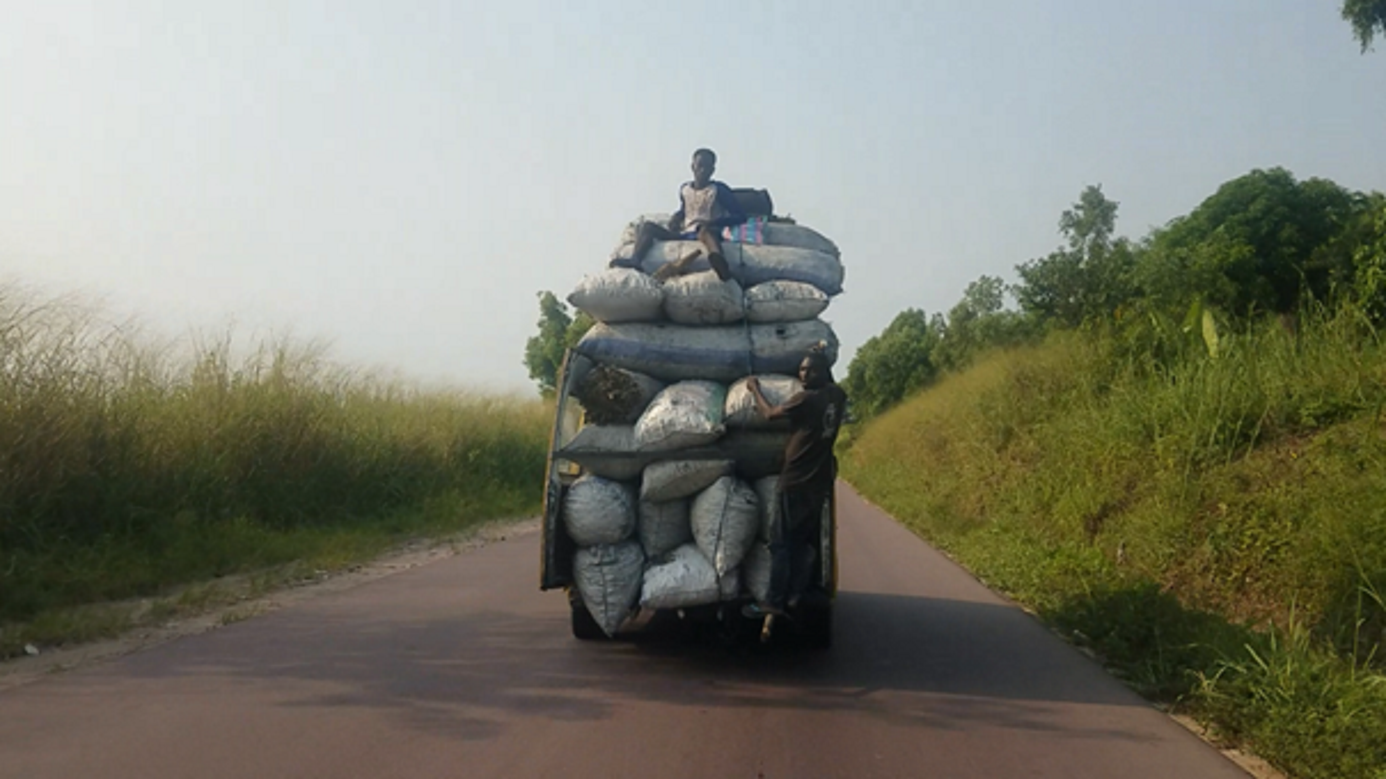
Vehicle carrying bags of makala (charcoal) from Kasangulu to Kinshasa. Photo: © UNDP DRC CO, SGP DRC.
Having the highest biodiversity of all terrestrial ecosystems, forests play a crucial role in tackling climate change and alleviating poverty.
Around 1.6 billion people in the world, including more than 2,000 indigenous cultures, depend on them for their livelihoods, medicines, fuel, food, and shelter.
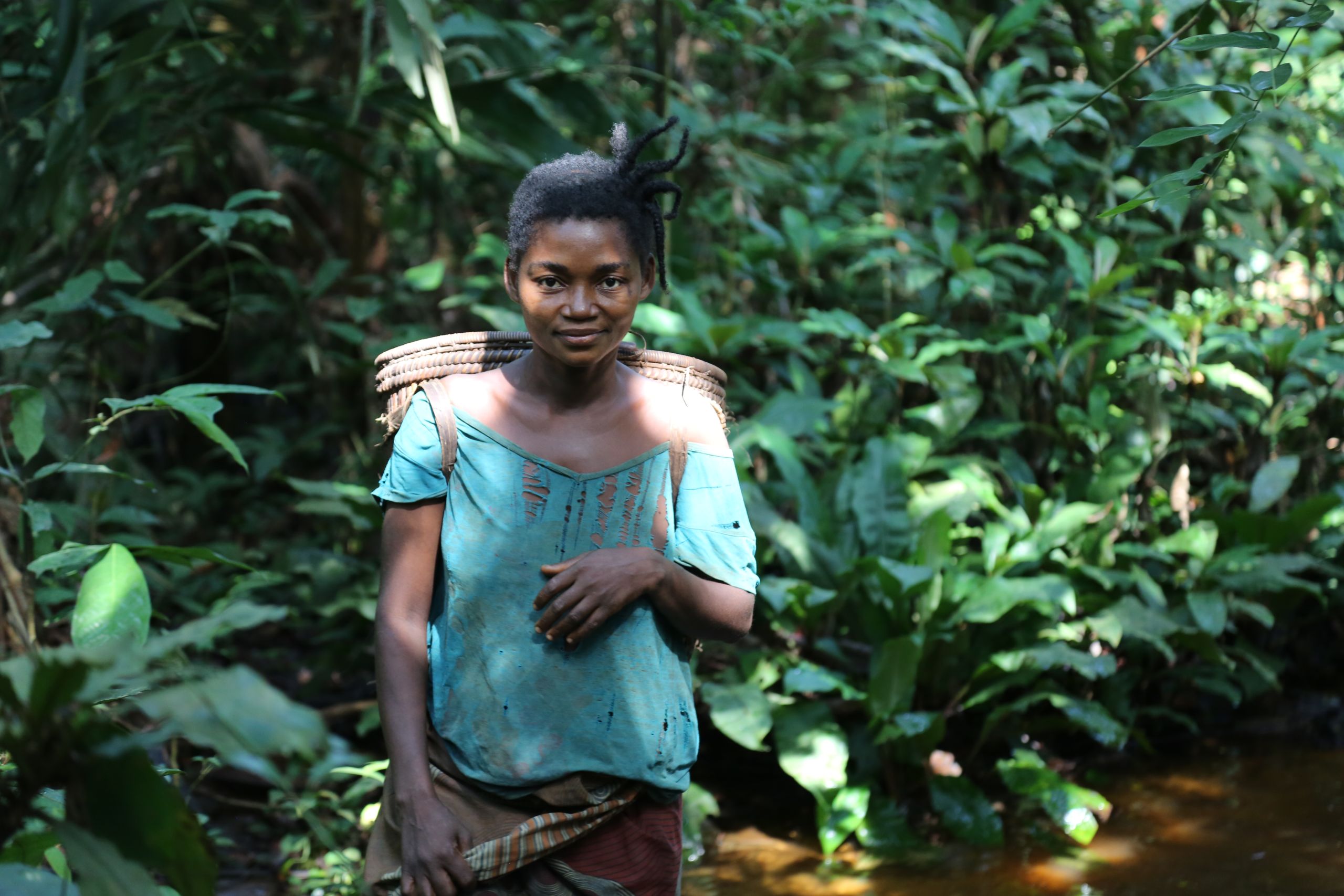
Local communities rely on resources from the forest for their livelihoods, medicines, fuel, food, and shelter. Photo: © UNDP DRC CO, SGP DRC.
Despite these priceless ecological, economic, social, and health benefits, global deforestation continues at an alarming rate: 13 million hectares of forest are destroyed each year, which accounts for 12 to 20 per cent of the global greenhouse emissions that contribute to global warming and climate change.

Charcoal ready to use. Photo: © UNDP DRC CO, SGP DRC.
Charcoal ready to use. Photo: © UNDP DRC CO, SGP DRC.

Firewood bundles. Photo: © UNDP DRC CO, SGP DRC.
Firewood bundles. Photo: © UNDP DRC CO, SGP DRC.

Vehicle carrying bags of makala (charcoal) from Kasangulu to Kinshasa. Photo: © UNDP DRC CO, SGP DRC.
Vehicle carrying bags of makala (charcoal) from Kasangulu to Kinshasa. Photo: © UNDP DRC CO, SGP DRC.

Local communities rely on resources from the forest for their livelihoods, medicines, fuel, food, and shelter. Photo: © UNDP DRC CO, SGP DRC.
Local communities rely on resources from the forest for their livelihoods, medicines, fuel, food, and shelter. Photo: © UNDP DRC CO, SGP DRC.
Fumbwa is typically found growing on forest floors, where it thrives year-round, protected by shade. It was originally used by the Bakongo ethnic group in Kasangulu for food and medicine, but today it is eaten routinely in all the DRC’s provinces, thanks to its pleasant taste, accessible price, and high nutritional value.
“We have learned from our ancestors that the consumption of raw fumbwa ensures longevity because it fights and treats diseases such as gastritis, diabetes, scabies and eye problems.”
His neighbour Mama-koko Nsilu attributes her good physical condition at 80 years old to the consumption of organic products and raw vegetables, such as fumbwa:
“It gives us energy. This is why our antibodies are different from the people of the city”.

But as a result of deforestation, fumbwa has almost disappeared in Kasangulu. Local sellers now must source it from other provinces, which increases transportation costs and affects the vegetable’s final price.
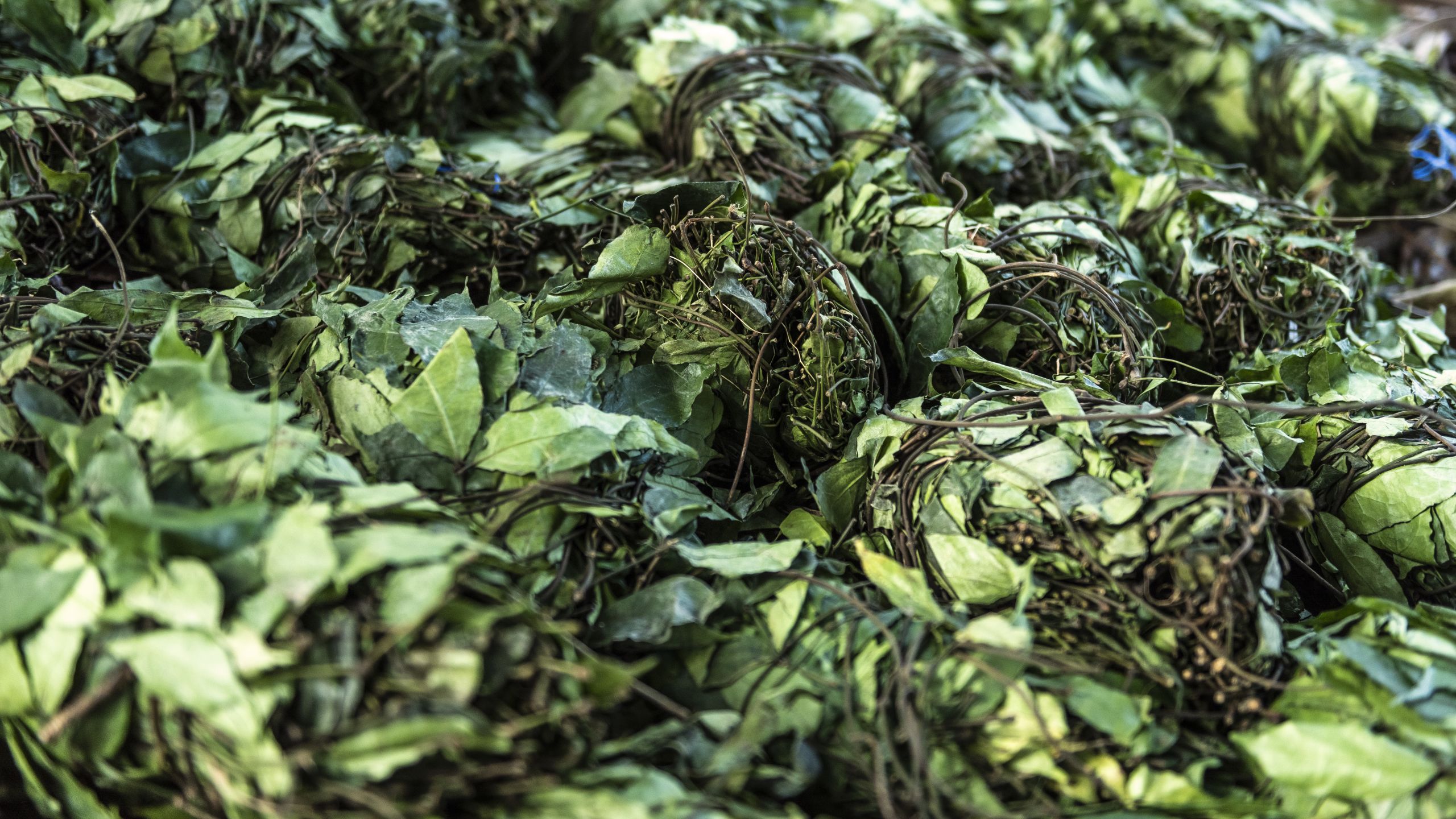
Fumbwa bundles for sale at a local market. Photo: © UNDP DRC CO, SGP DRC.
“Even in Kinshasa, it is becoming rare and expensive”, notes Nsimba Luboko, who sells small piles of fumbwa leaves cut into thin strips at the Kasangulu market.
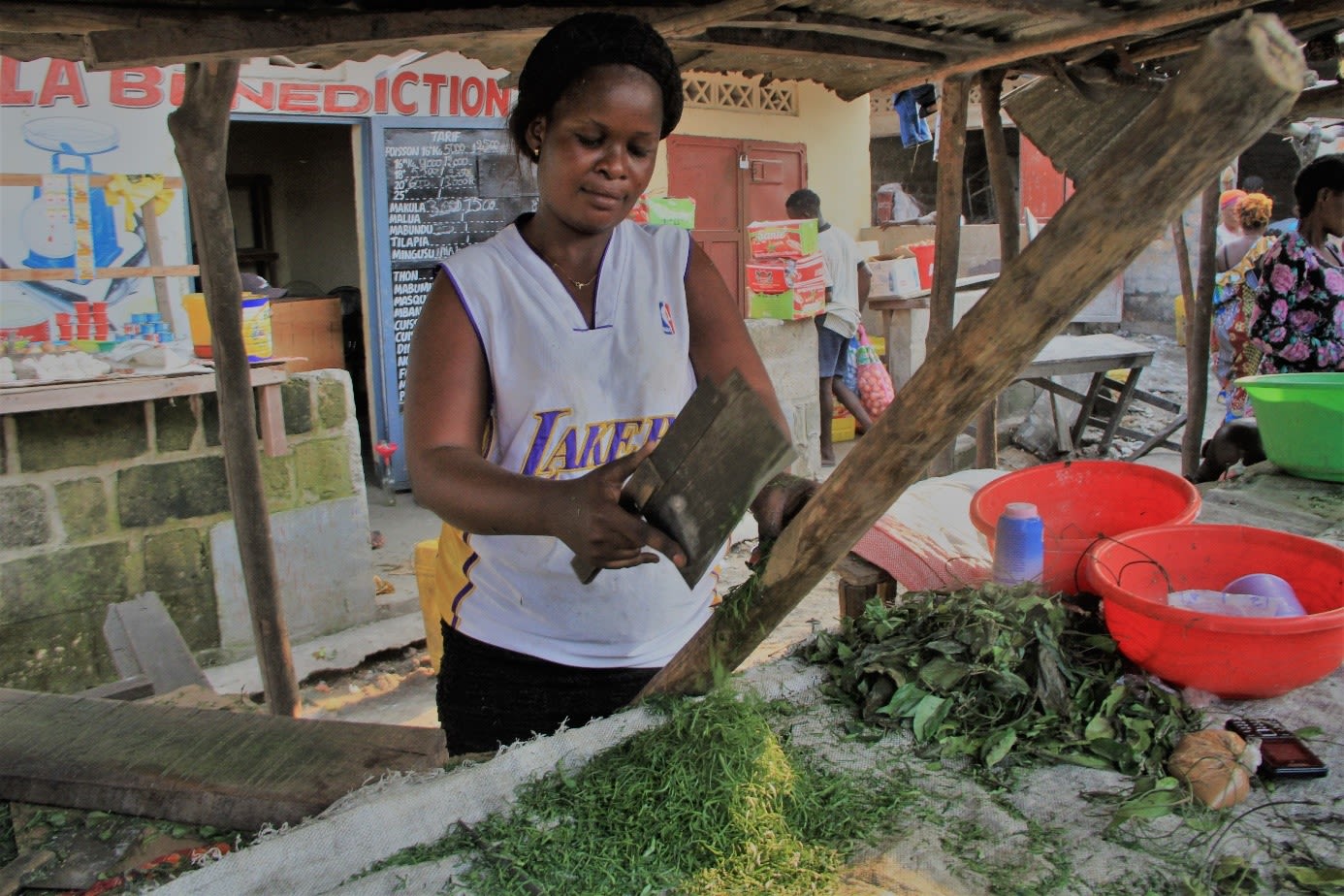
Nsimba Luboko, fumbwa seller at Kasangulu market. Photo: © UNDP DRC CO, SGP DRC.
“For my household of seven people, I spend at least 12,000 Congolese Francs (US$6) to prepare fumbwa. It’s too much money for us, but I have no choice because it is a food highly prized at our home since our ancestors”, says Mvuemba Masamba, another Luseki resident.

Fumbwa bundles for sale at a local market. Photo: © UNDP DRC CO, SGP DRC.
Fumbwa bundles for sale at a local market. Photo: © UNDP DRC CO, SGP DRC.

Nsimba Luboko, fumbwa seller at Kasangulu market. Photo: © UNDP DRC CO, SGP DRC.
Nsimba Luboko, fumbwa seller at Kasangulu market. Photo: © UNDP DRC CO, SGP DRC.
In July 2020, RIID launched a project to address the shortage of fumbwa in Kasangulu while promoting sustainable forest management, thereby restoring the local ecosystem and increasing local people’s income.
With support from the Global Environment Facility’s Small Grants Programme (SGP), implemented by the United Nations Development Programme, the initiative aims to produce at least 150,000 fumbwa seedlings to be transplanted by local communities into 200 hectares of forests:
“Fumbwa was chosen for this project… by the local communities. When the plants are integrated into the community forests, the local people will be discouraged from farming in the conserved forest areas. This will greatly contribute to the fight against climate change and global warming”, explains Thomas.
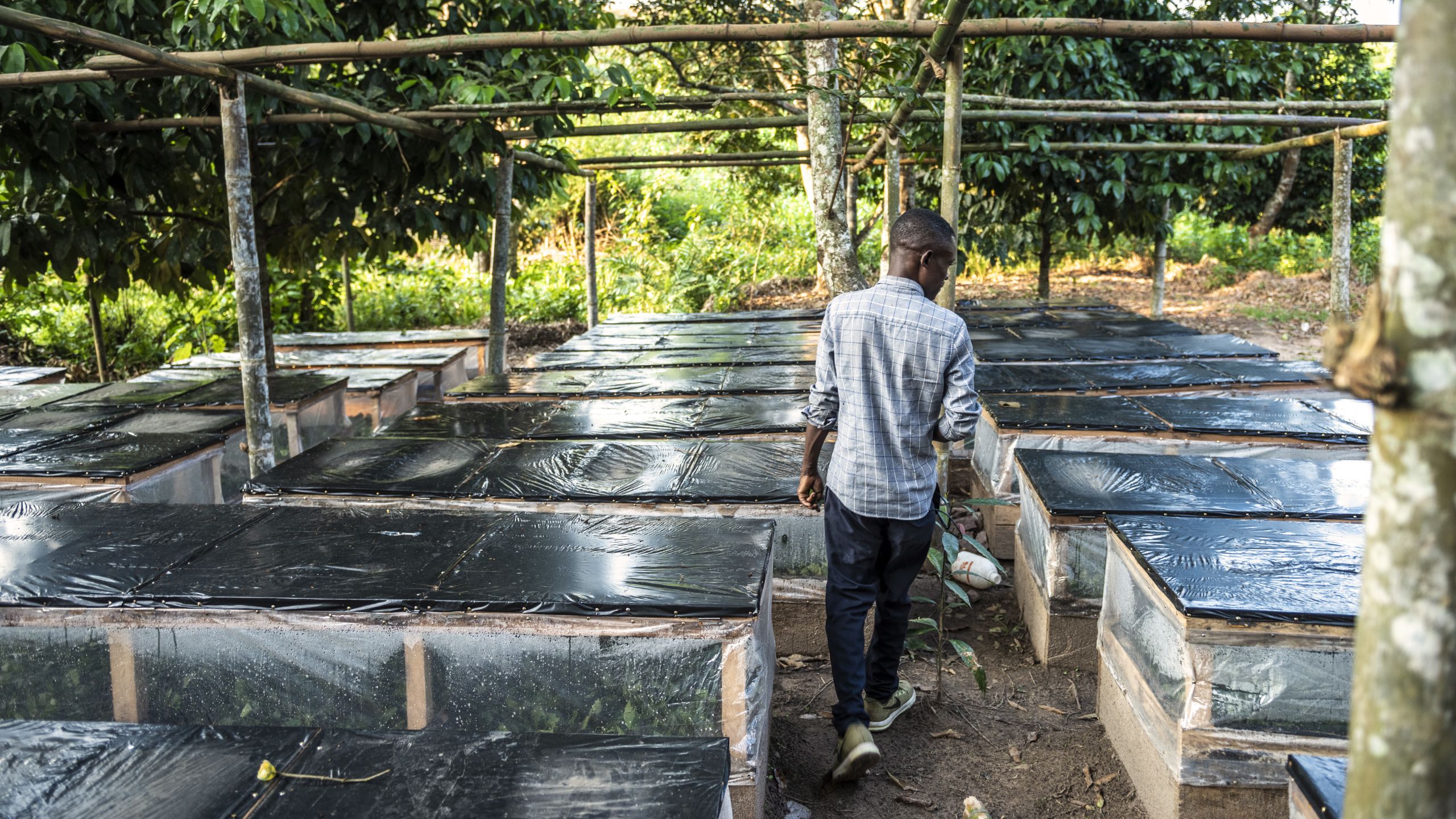
The project set up two fumbwa nurseries in the villages of Kindundu and Boko Disu, where the plants grow for nine months before the seedlings are mature enough for transplantation into conserved forests.
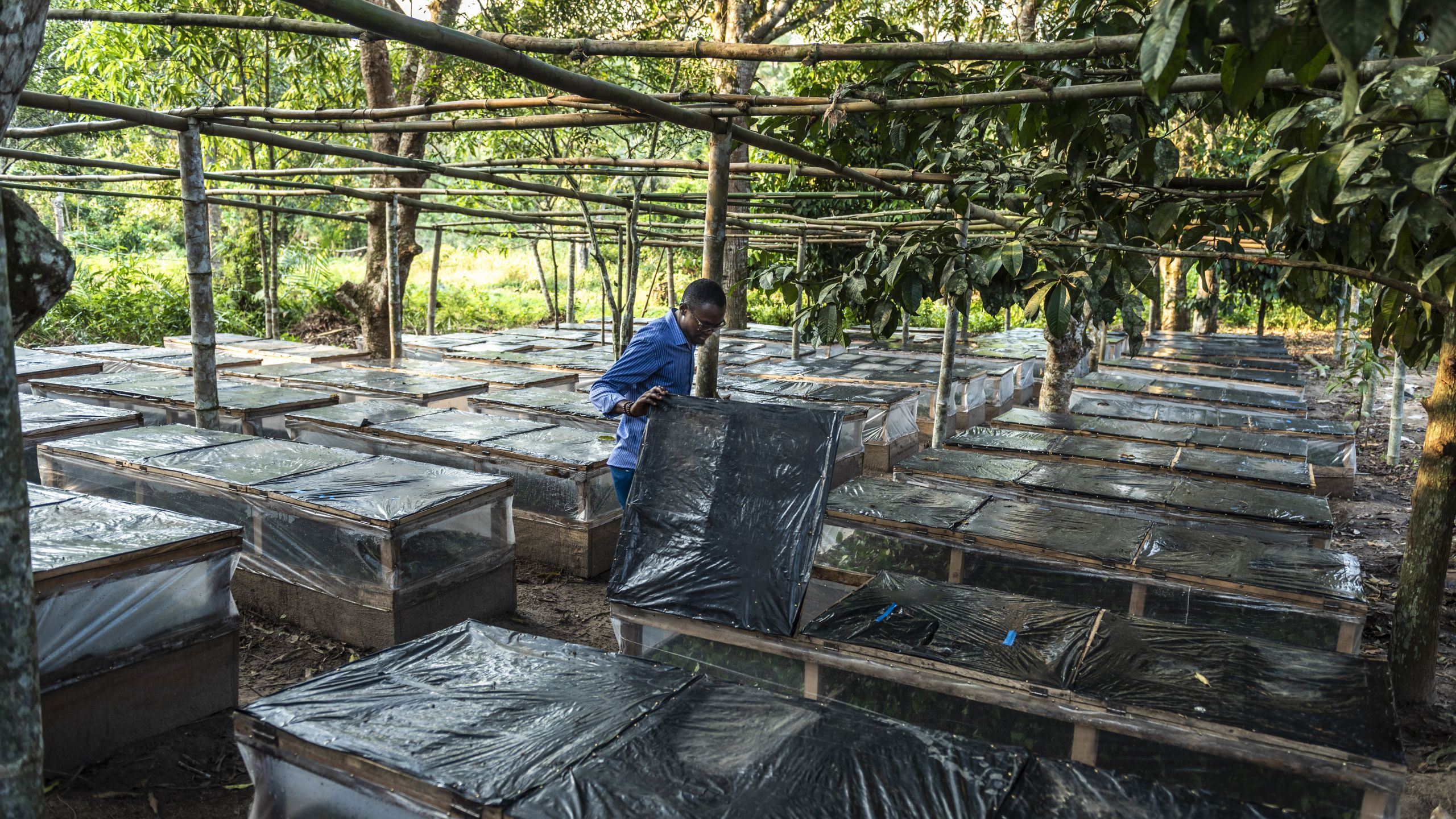
Fumbwa seedlings growing in the propagation nursery that will be transplanted into conserved forests around seven villages in Kasangulu. Photo: © UNDP DRC CO, SGP DRC.
Members of the local communities receive training in all steps of the operation, as well as on ancillary sustainable forest activities such as beekeeping.
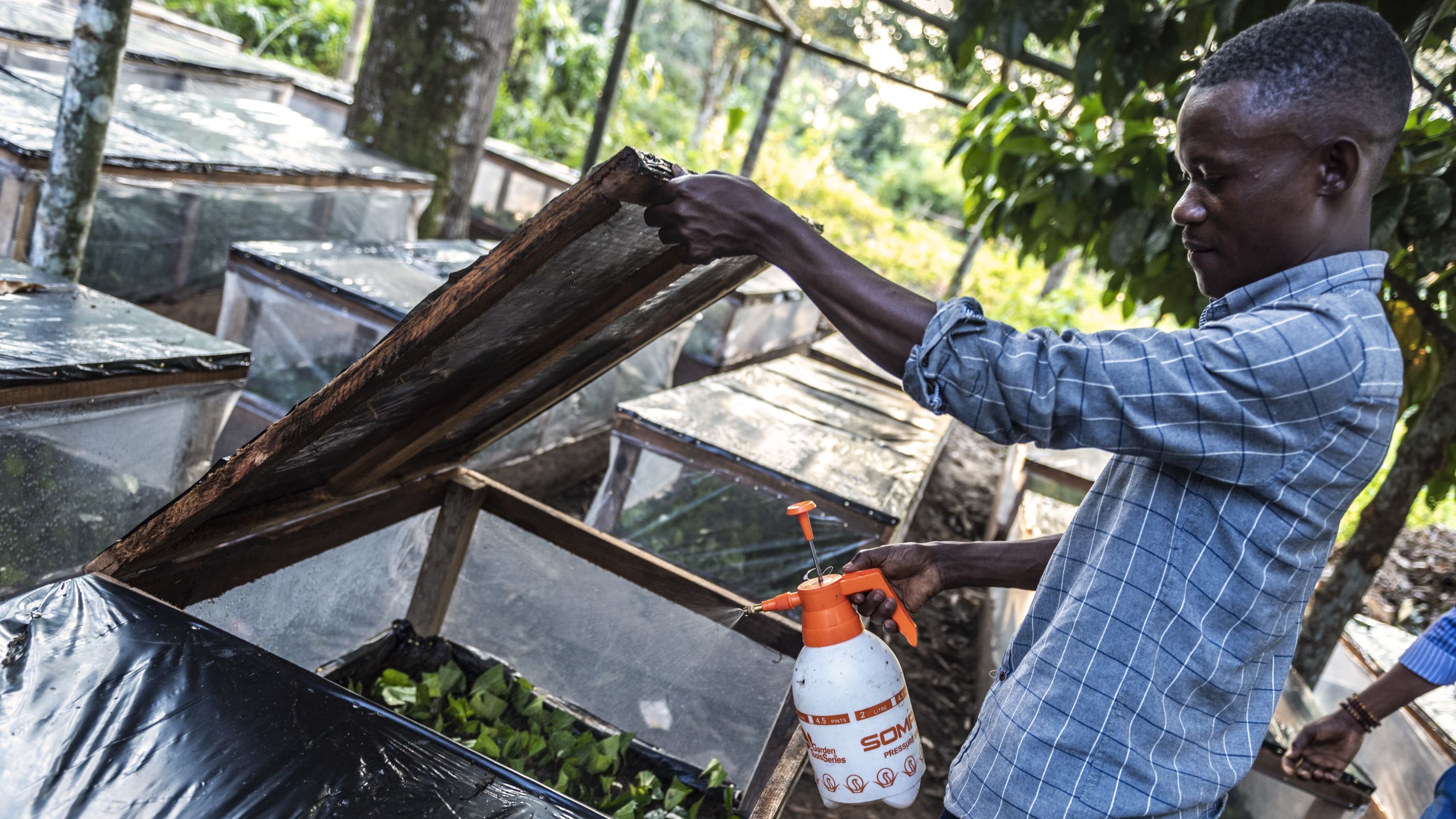
Caring for the growing seedlings in the production nurseries. Photo: © UNDP DRC CO, SGP DRC.
“As a result, we will see the return of animals, birds and other non-timber forest products, such as caterpillars, mushrooms and wild fruits that have disappeared. Fumbwa is widely consumed in our country, it will constitute a source of income for the village communities and allow them to improve the quality of their life”, explains Thomas.
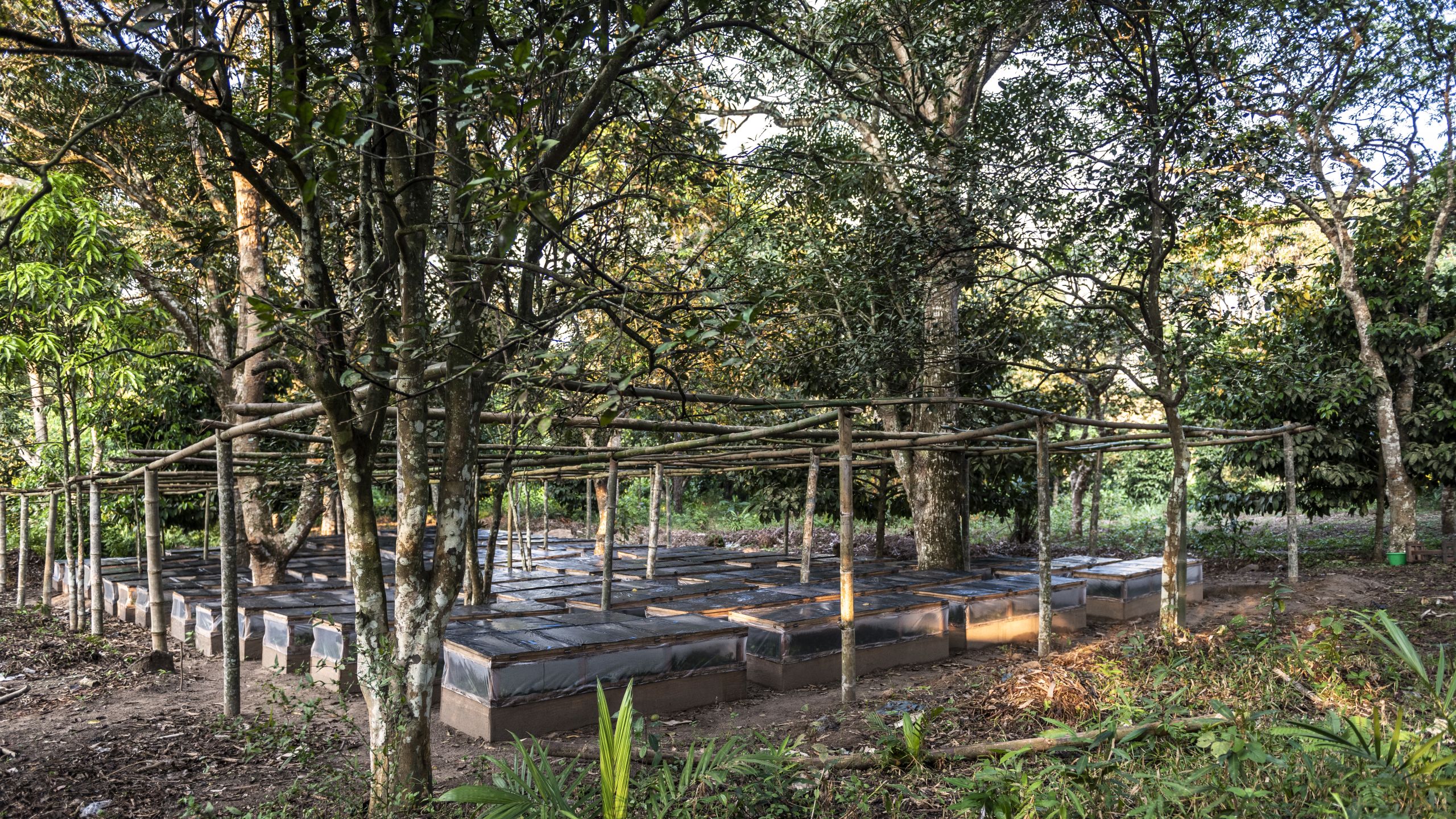
Production nurseries. Photo: © UNDP DRC CO, SGP DRC.
Production nurseries. Photo: © UNDP DRC CO, SGP DRC.

Caring for the growing seedlings in the production nurseries. Photo: © UNDP DRC CO, SGP DRC.
Caring for the growing seedlings in the production nurseries. Photo: © UNDP DRC CO, SGP DRC.

Fumbwa seedlings growing in the propagation nursery that will be transplanted into conserved forests around seven villages in Kasangulu. Photo: © UNDP DRC CO, SGP DRC.
Fumbwa seedlings growing in the propagation nursery that will be transplanted into conserved forests around seven villages in Kasangulu. Photo: © UNDP DRC CO, SGP DRC.
After participating in all phases of the project, Mbuta Muntu Bantantu André received fumbwa plants to transplant into his land in Kindundu village:
“I know the importance of trees. This is how I have been developing by conserving the forest since 1970. We have been eating fumbwa since our ancestors [but] it disappeared from our forests, we must buy it to eat it. This project brings us the solution by planting it at the foot of trees. When it matures, the people of Kasangulu will get fumbwa here instead of going to Kinshasa”.
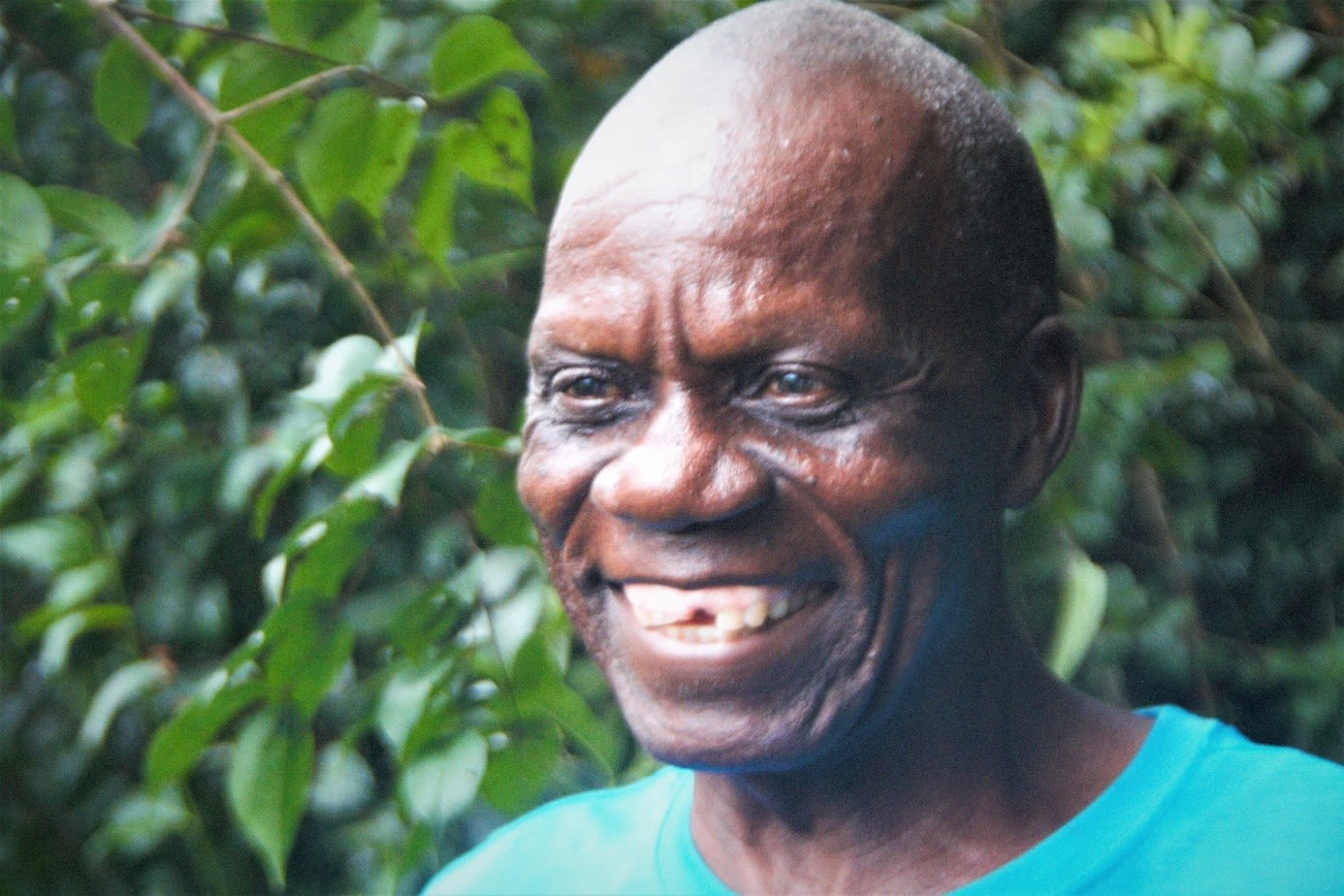
Mbuta muntu Bantantu André, village Kindundu. Photo: © UNDP DRC CO, SGP DRC.
As a result, he believes local communities will be encouraged to send their children to school because they will have higher income and enough food for their families. André also hopes the project is expanded to other territories of Kongo Central so that fumbwa can be found on every plate, as in the days of his ancestors.
In the village of Luseki, a community-based organisation responsible for 700 hectares of conserved forest has already transplanted over 13,000 fumbwa plants after its members were trained by RIID. “Now we know that it is possible to plant fumbwa. For us, it was a wild plant from the forests that our ancestors ate”, recalls Nuni Kuyeka, president of the organisation.
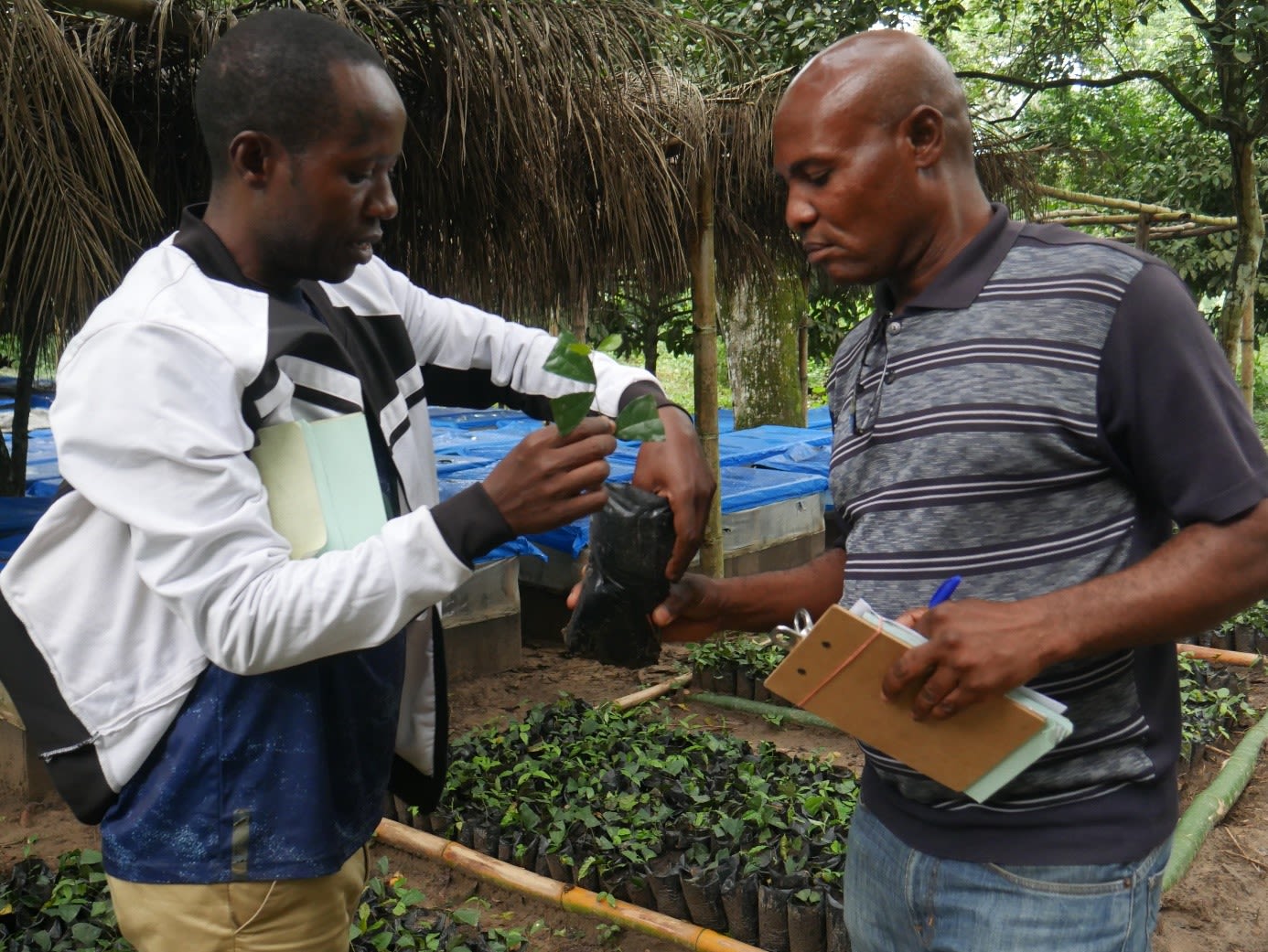
Bueno Ngenga Thomas and Supervisor Mvumbi Bonaventure visiting the fumbwa domestication site, Kindundu Village. Photo: © UNDP DRC CO, SGP DRC.
“Our plants are already growing; we take care of them. We want to reach 30,000 plants because our forest is vast. We will be able to eat [fumbwa] in the community and sell it to allow our children to study and [also to] earn money”, he adds.

Bueno Ngenga Thomas and Supervisor Mvumbi Bonaventure visiting the fumbwa domestication site, Kindundu Village. Photo: © UNDP DRC CO, SGP DRC.
Bueno Ngenga Thomas and Supervisor Mvumbi Bonaventure visiting the fumbwa domestication site, Kindundu Village. Photo: © UNDP DRC CO, SGP DRC.

Mbuta muntu Bantantu André, village Kindundu. Photo: © UNDP DRC CO, SGP DRC.
Mbuta muntu Bantantu André, village Kindundu. Photo: © UNDP DRC CO, SGP DRC.
Eight months into the project, 40 per cent of the target 150,000 fumbwa plants have been transplanted into conserved forests around seven villages in Kasangulu.
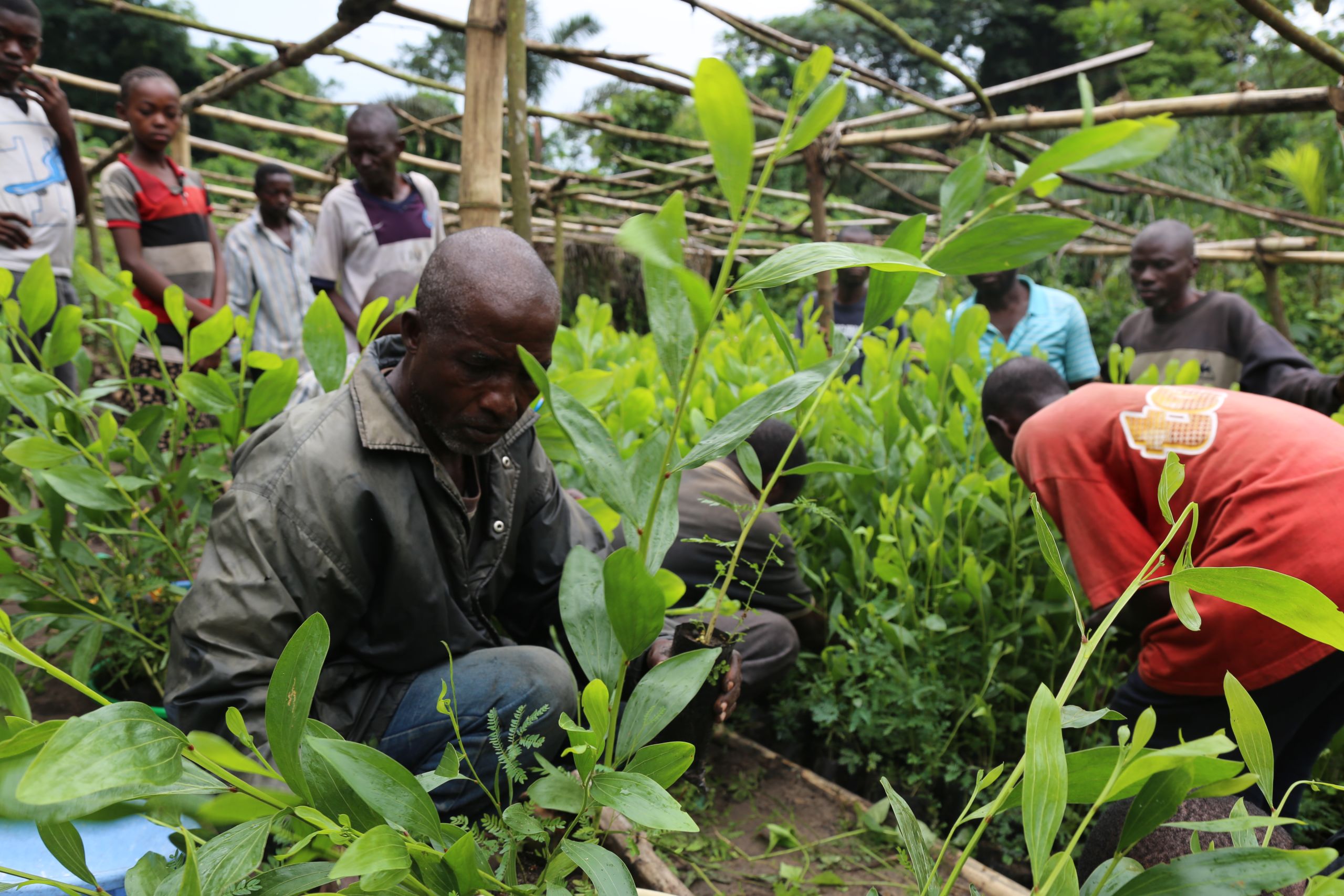
Photo: © UNDP DRC CO, SGP DRC.
In Luseki, the community is already seeing signs that the ecosystem’s balance is being restored, as Kuyeka reports:
“We recently collected caterpillars in large quantities; we picked mushrooms; we are already experiencing the return of some animals, such as antelopes and squirrels. We have installed beehives for beekeeping. We have wild fruits and so many plants used in traditional medicine. We benefit from a cool breeze in our village. Everything that we have in our forest can generate [more] profits than the sale of the charcoal that destroys our forests”.
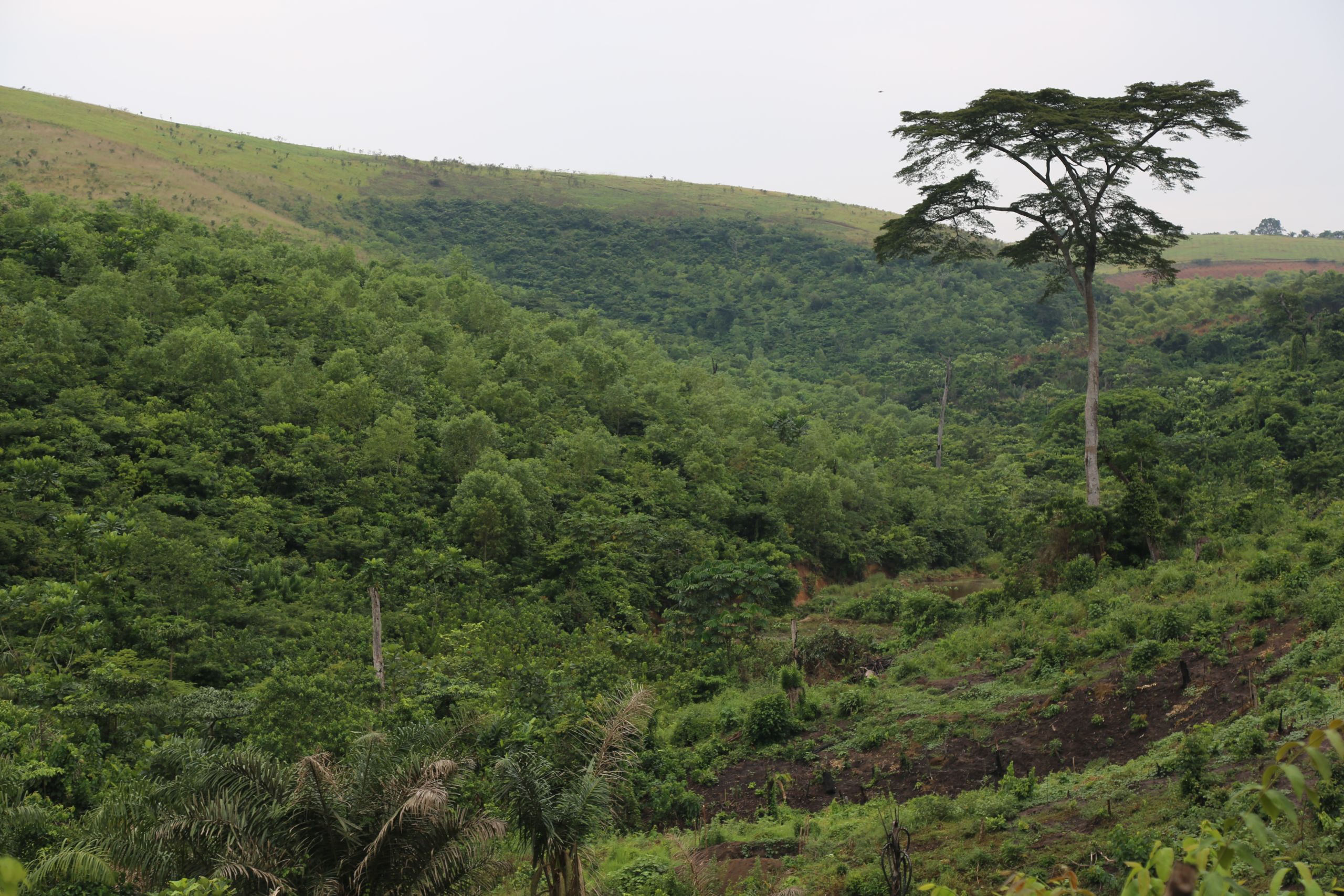
Photo: © UNDP DRC CO, SGP DRC.
The supervisor of the Ministry of Environment and Sustainable Development in the Kasangulu territory, Mvumbi Bonaventure, supports the project for its contribution in the fight against deforestation: “We are ready to help local communities protect their forests by granting them legal documents to create protected areas”, he says. As local communities are encouraged to preserve their remaining forests and to develop alternatives to charcoal, these conserved areas will contribute to combating global warming and restoring biodiversity.
According to Thomas, RIID has received several requests from communities who have recently obtained documentation to protect their forests and want to participate in the project, even outside Kasangulu territory.
“We believe this activity cannot stop until it covers the majority of forests in Kasangulu territory and, why not, in other territories of Kongo Central”, he says.

Photo: © UNDP DRC CO, SGP DRC.
Photo: © UNDP DRC CO, SGP DRC.

Photo: © UNDP DRC CO, SGP DRC.
Photo: © UNDP DRC CO, SGP DRC.
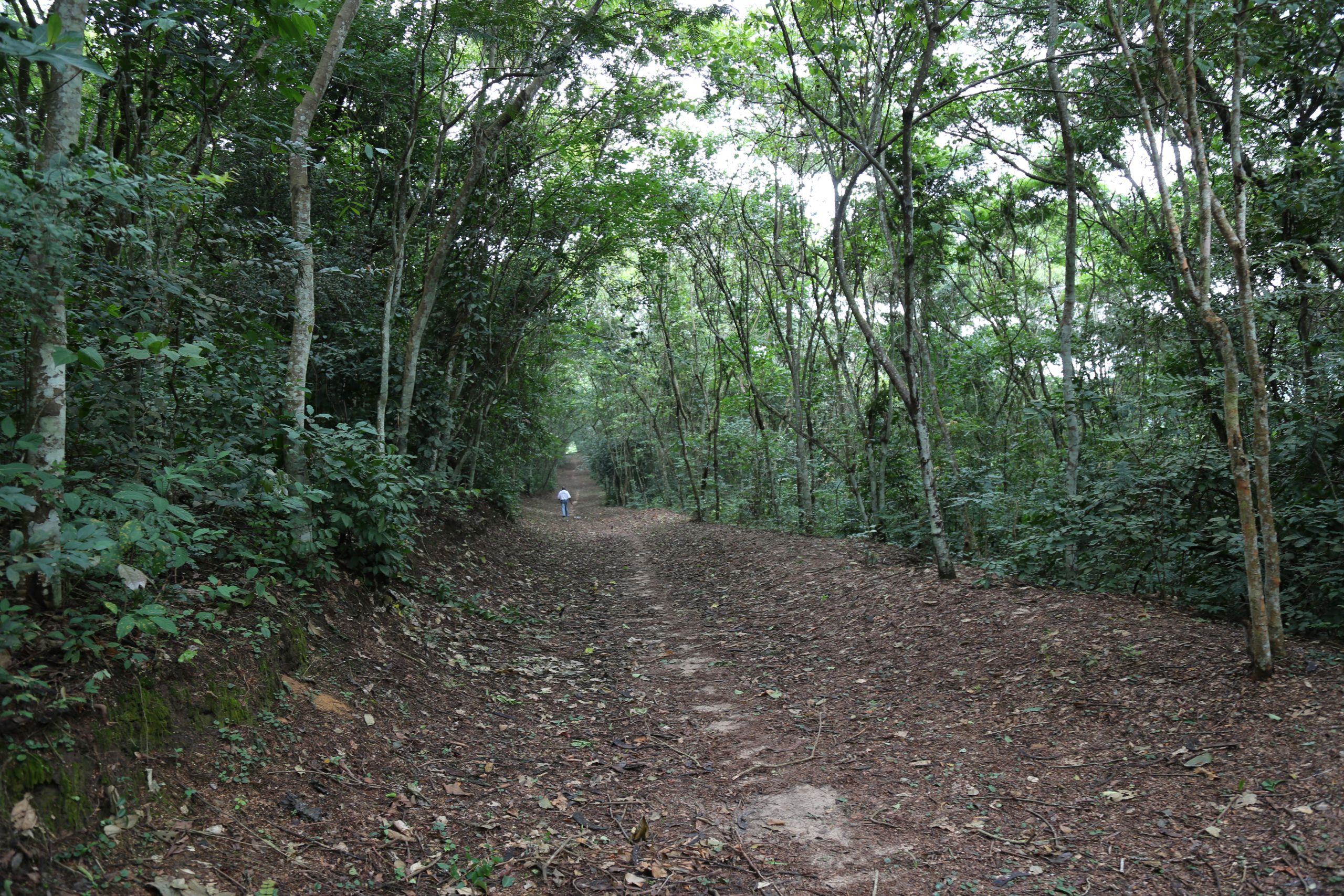
Photo: © UNDP DRC CO, SGP DRC.
Photo: © UNDP DRC CO, SGP DRC.
Small Grants = Big Impacts
SGP provides financial and technical support to civil society and community-driven initiatives that address global environmental issues while improving local livelihoods.
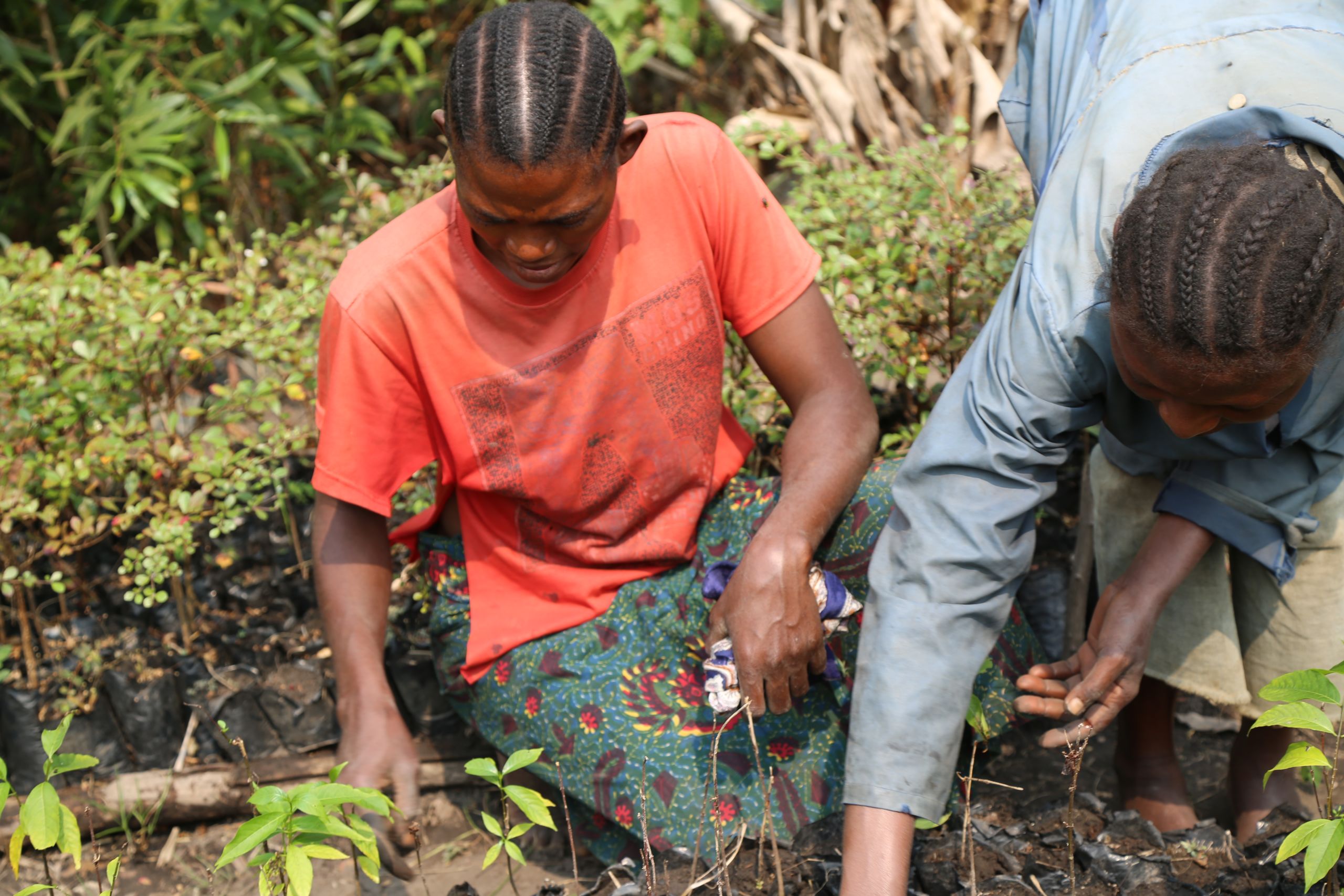
Photo: © UNDP DRC CO, SGP DRC.
Since 2009, it has supported more than 200 projects in the DRC in the areas of biodiversity, capacity development, land degradation, international waters, and climate change - including adaptation.
SGP-supported projects in the country are aligned with national environmental protection priorities and implemented in the provinces of Kongo Central, Kwango, Kinshasa, Haut-Katanga, Equateur, North Kivu and Kasai.
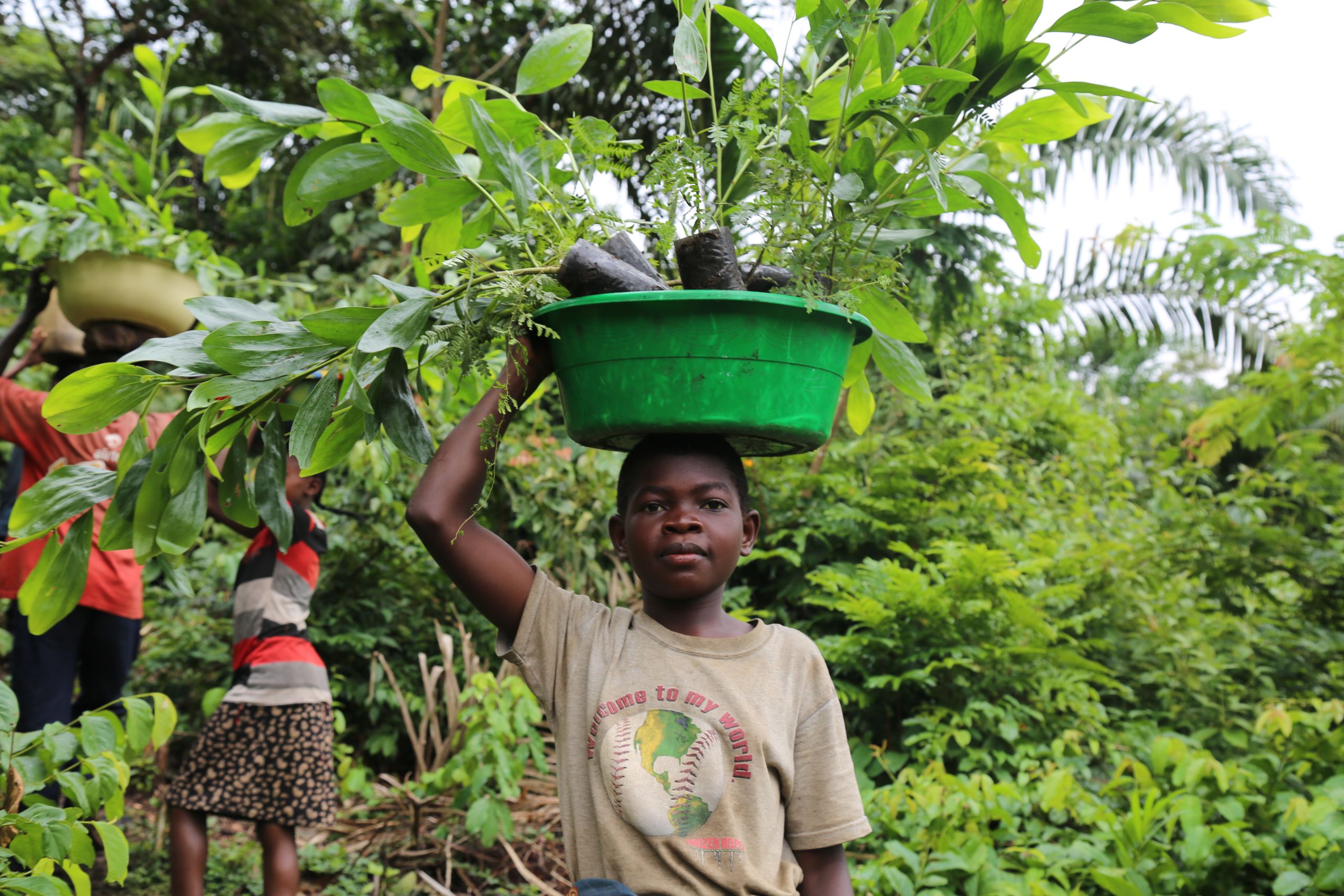
Photo: © UNDP DRC CO, SGP DRC.
Moreover, SGP DRC also worked on many other forest related projects, including as one of six countries participating in the pilot phase of the Community-Based REDD+ (CBR+), a partnership between the United Nations REDD Programme and SGP that was launched in 2015.
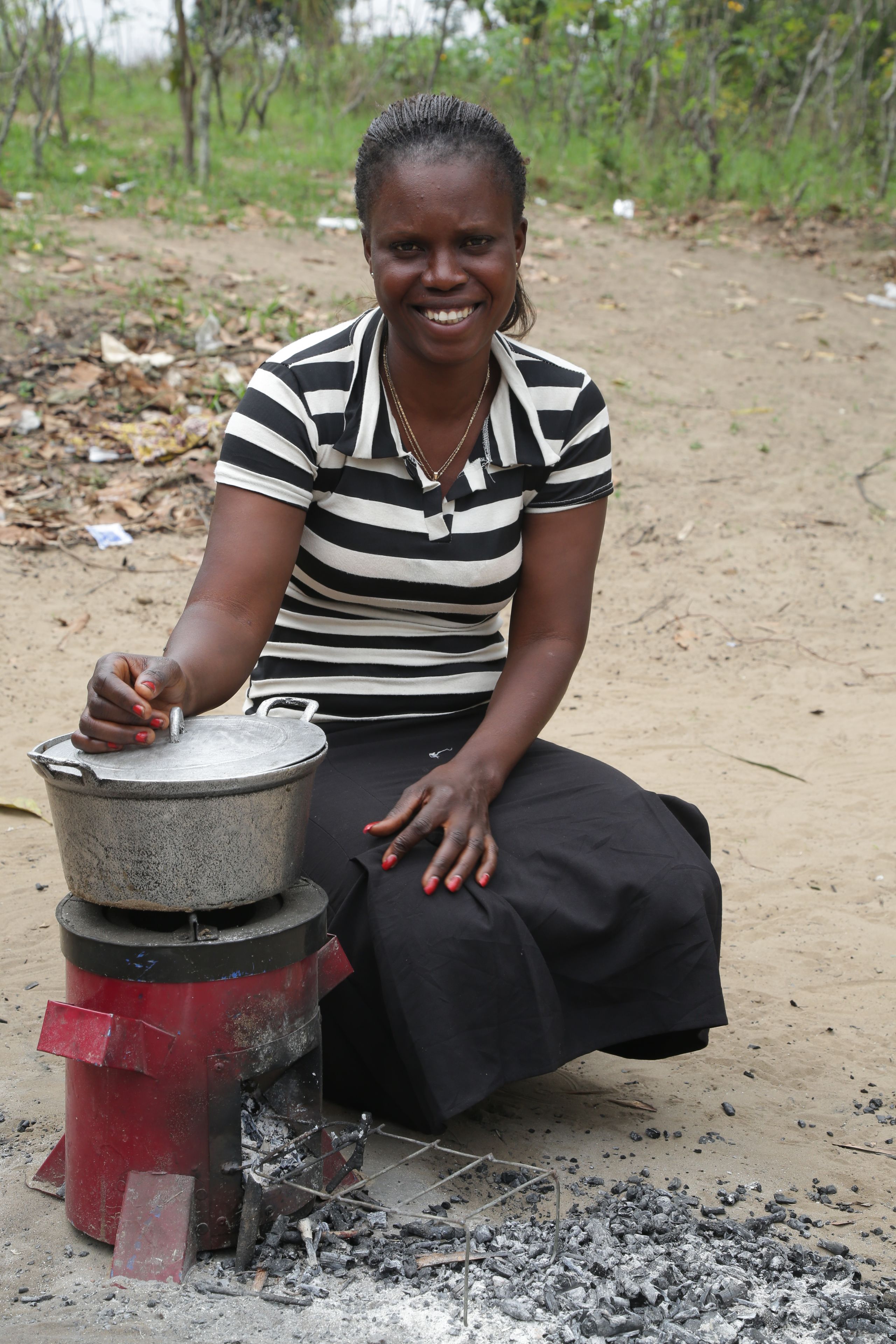
Photo: © UNDP DRC CO, SGP DRC.
For more information, visit the SGP DRC Country page.
Visit the SGP global website for details on the overall Small Grants Programme.

Photo: © UNDP DRC CO, SGP DRC.
Photo: © UNDP DRC CO, SGP DRC.

Photo: © UNDP DRC CO, SGP DRC.
Photo: © UNDP DRC CO, SGP DRC.

Photo: © UNDP DRC CO, SGP DRC.
Photo: © UNDP DRC CO, SGP DRC.

Story by: Ana Paula Canestrelli, Benjamin Lukoki and Andrea Egan
Photos: © UNDP DRC CO, SGP DRC.
Header photo: © UNDP DRC CO, SGP DRC.
Location: Kasangulu territory, the DRC
